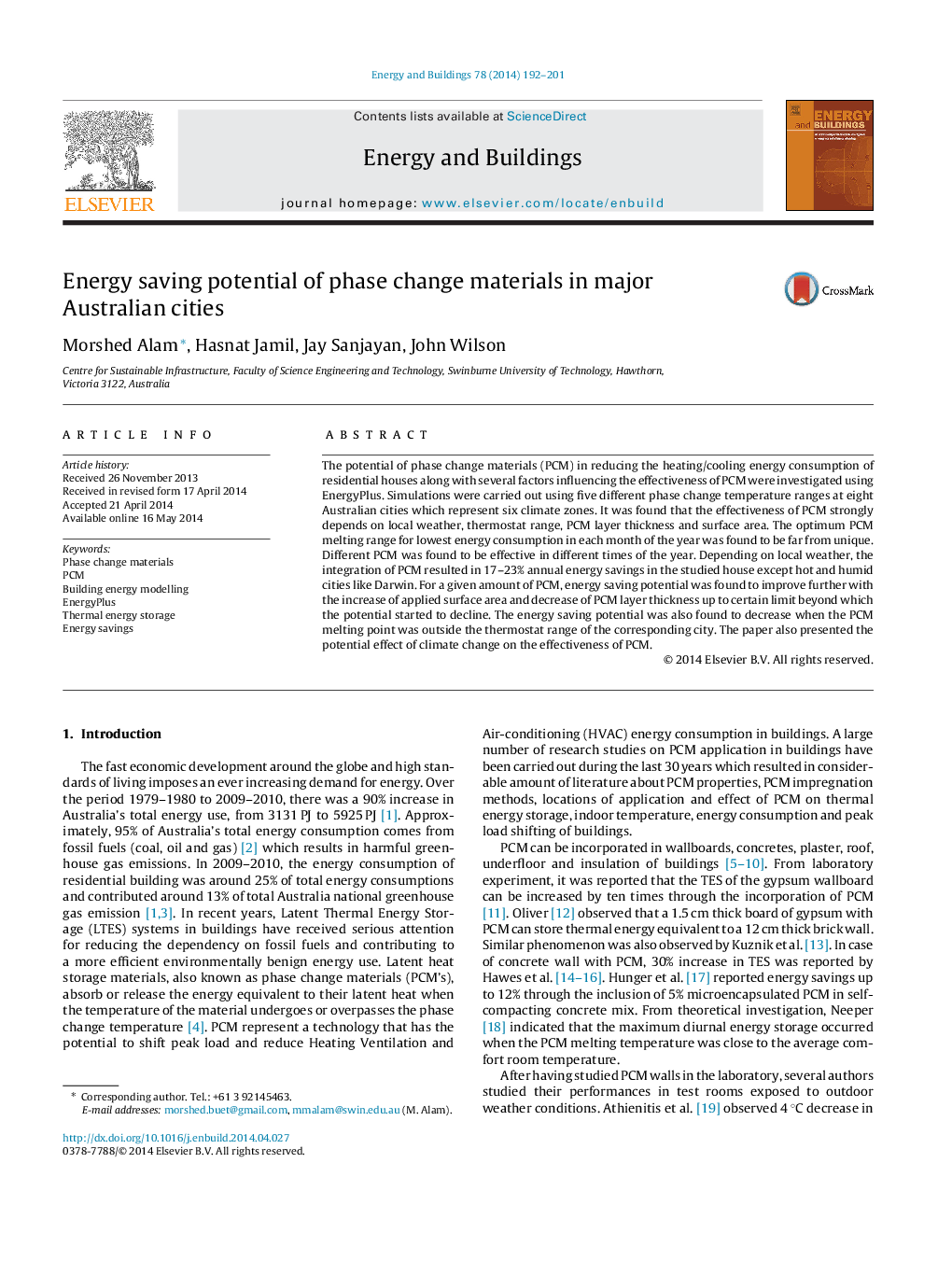| Article ID | Journal | Published Year | Pages | File Type |
|---|---|---|---|---|
| 6733410 | Energy and Buildings | 2014 | 10 Pages |
Abstract
The potential of phase change materials (PCM) in reducing the heating/cooling energy consumption of residential houses along with several factors influencing the effectiveness of PCM were investigated using EnergyPlus. Simulations were carried out using five different phase change temperature ranges at eight Australian cities which represent six climate zones. It was found that the effectiveness of PCM strongly depends on local weather, thermostat range, PCM layer thickness and surface area. The optimum PCM melting range for lowest energy consumption in each month of the year was found to be far from unique. Different PCM was found to be effective in different times of the year. Depending on local weather, the integration of PCM resulted in 17-23% annual energy savings in the studied house except hot and humid cities like Darwin. For a given amount of PCM, energy saving potential was found to improve further with the increase of applied surface area and decrease of PCM layer thickness up to certain limit beyond which the potential started to decline. The energy saving potential was also found to decrease when the PCM melting point was outside the thermostat range of the corresponding city. The paper also presented the potential effect of climate change on the effectiveness of PCM.
Keywords
Related Topics
Physical Sciences and Engineering
Energy
Renewable Energy, Sustainability and the Environment
Authors
Morshed Alam, Hasnat Jamil, Jay Sanjayan, John Wilson,
